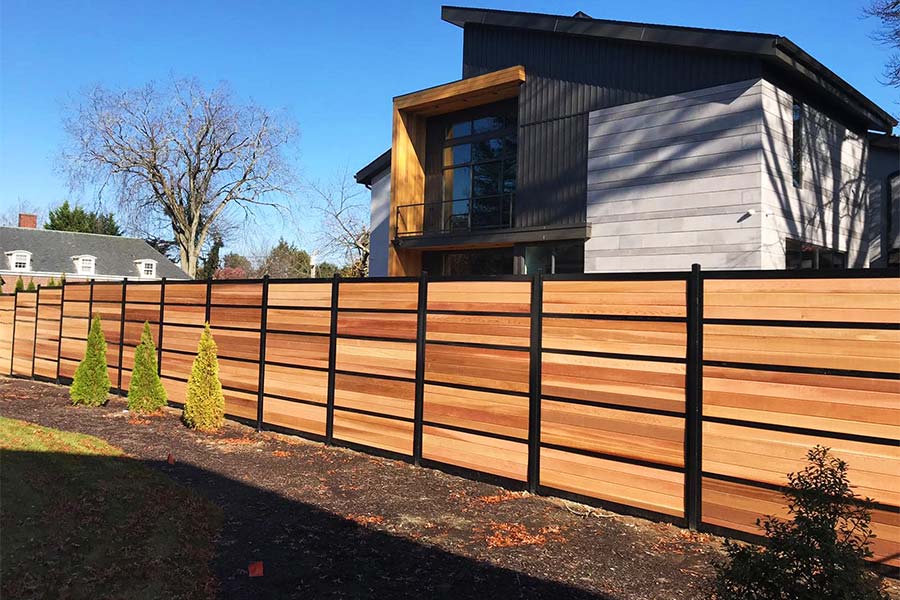All Categories
Featured

When planning a new fence for your property, it's very easy to focus on the basic prices-- products, installation, and labor. A number of surprise expenses can considerably affect your general spending plan. These extra expenses frequently go undetected but can rapidly build up if you're not prepared. Here's a guide to a few of the most usual covert prices to consider when budgeting for your fencing job.
- Permit Costs and Legal Requirements. Prior to you begin digging, it is essential to inspect if your area calls for a license to install a fencing. Many towns have zoning regulations that regulate fence elevation, product, and positioning, especially if you're building near a property line or in a neighborhood with a Property owners' Organization (HOA) These laws make certain the fence meets local requirements, but they also come with associated costs.
Price array: $50 to $500, depending upon your area and the complexity of your job. 2. Fence Removal and Disposal. If you're changing an existing fence, elimination and disposal of the old framework is an additional expense that can conveniently be neglected. Fence elimination typically includes taking apart the old fence, carrying away the products, and dealing with them correctly. Disposal costs can differ, particularly if the old products call for special handling, such as cured wood or metal.

Cost array: $2 to $10 per linear foot for elimination and disposal, relying on the products. 3. Land Prep Work and Excavation. A perfectly level installation website is not constantly guaranteed. If the land where your fencing is being set up is irregular, rocky, or covered in plant life, it might require to be cleared or leveled. Grading or excavation prices can contribute to your overall task expenditures, specifically if you're setting up articles in hard-to-dig dirt. Slopes or compressed dirt may call for specialized equipment and more labor.
Price variety: $300 to $2,000, depending upon the site's problem. 4. Utility Line Identification and Changes. Before digging, it's important to guarantee that no below ground energies, like water, gas, or electric lines, will certainly be disrupted during the installation. A lot of service providers will certainly contact utility business to note these lines, however there can be added expenses if changes are required to avoid destructive existing facilities.
Price array: $100 to $500, depending upon whether modifications are required. 5. Custom Characteristics and Upgrades. While your standard fence might include basic materials, you could want to include personalized features like entrances, decorative panels, or incorporated illumination. Automatic gates or protection systems are specifically pricey and require expert setup. Including these bonus increases the overall cost of your fencing, so make certain to factor them into your budget plan.

Price range: $100 to $1,500+ for features or entrances, depending upon dimension and complexity. 6. Shipment and Transport Prices. Depending upon where your materials are sourced, you may be charged a separate delivery fee for carrying the fence materials to your home. This is particularly typical with large or heavy orders, such as timber panels or metal fencing. Shipment costs can also vary based on the distance between the supplier and your place.
Price array: $50 to $300 for delivery, depending on range and the amount of materials. 7. Maintenance Expenses In Time. Lots of sorts of fencings, particularly wood fences, call for recurring upkeep to stay in great condition. Normal jobs like discoloration, sealing, and cleansing will aid prolong the life of your fence. Some materials, such as plastic or metal, might be more low-maintenance but can still incur expenses for repair services or replacements if harmed.
Yearly expense variety: $50 to $300 for upkeep, relying on material and environment. 8. Weather condition Hold-ups. Mother earth doesn't constantly cooperate with your timeline. If your installation is postponed by negative climate, such as rainfall or extreme warmth, you may encounter added labor costs if employees require to return to finish the task at a later time. Delays can additionally extend the task timeline, pushing back when the fence is prepared for use.
Expense range: Variable, relying on the length of time the hold-up lasts. 9. Property Line Disputes. Installing a fencing near to your residential or commercial property line can occasionally lead to conflicts with next-door neighbors. It might be necessary to work with an expert property surveyor to validate the home line before setup if your border is uncertain. This extra step guarantees you will not accidentally encroach on your neighbor's land, yet it features included expenses.
Expense array: $400 to $1,000 for a residential property study, depending upon your place. 10. Dirt and Ground Conditions. Specific soil kinds can provide obstacles throughout installation. If your residential or commercial property has rough, compressed, or clay-based soil, excavating openings for blog posts can be a lot more challenging, requiring specialized tools or even more time to complete. Harder ground problems may likewise demand making use of other or concrete reinforcing products for added stability.
Cost variety: $100 to $500 for tools or added labor. Verdict. Authorizations, site prep work, old fence removal, energy adjustments, and custom-made functions can all add up. By accounting for these concealed expenses, you can make sure that your fencing project remains within budget plan and is finished without unexpected economic shocks.
Latest Posts
Discover the Perfect Rug for Your Home
Published Apr 19, 25
1 min read
Financial Security for every single Stage of Life
Published Apr 19, 25
1 min read
Unlock Exclusive Discounts with WyHy's Love My Credit report Union Benefits
Published Apr 19, 25
1 min read